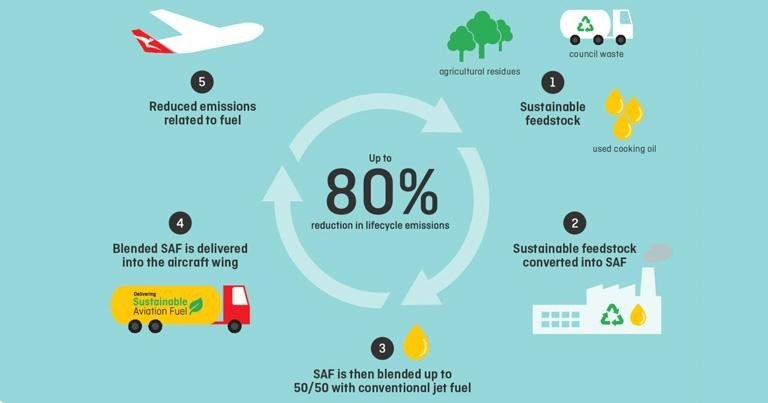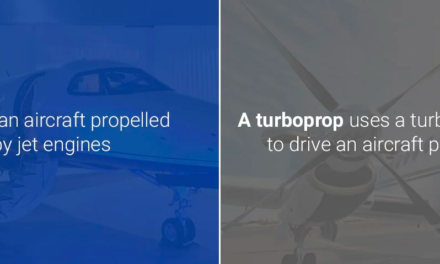Sustainable Aviation Fuels (SAFs) significantly reduce carbon emissions in the aviation sector by using renewable and sustainable resources to replace traditional fossil-based jet fuels. SAFs help the aviation industry achieve its decarbonization goals while maintaining compatibility with existing aircraft and fueling infrastructure. Here’s how SAFs work to reduce emissions:
1. Lifecycle Carbon Emission Reduction
- Renewable Feedstocks:
- SAFs are produced from sustainable resources such as waste oils, agricultural residues, municipal solid waste, algae, and other non-fossil materials.
- These feedstocks absorb CO₂ during their lifecycle (e.g., during plant growth), partially offsetting emissions generated during fuel combustion.
- Lower Net Emissions:
- SAF production and use can reduce lifecycle carbon emissions by up to 80% compared to conventional jet fuels, depending on the feedstock and production process.
- Examples of Feedstocks:
- Waste cooking oil, tallow, camelina, forestry residues, and purpose-grown energy crops.
2. Compatibility with Current Infrastructure
- Drop-In Fuel:
- SAFs are “drop-in” fuels, meaning they can be blended with conventional jet fuel and used in existing aircraft engines and fueling systems without modifications.
- Blends of up to 50% SAF are currently approved for commercial use, ensuring seamless integration into operations.
- Immediate Impact:
- By blending SAF with fossil fuels, the aviation industry can immediately reduce emissions without waiting for new technologies or infrastructure.
3. Reduced Non-CO₂ Emissions
- Lower Sulfur Content:
- SAFs have lower sulfur content than traditional jet fuels, reducing the formation of sulfate aerosols, which contribute to climate warming.
- Contrail Formation:
- SAFs can reduce contrail formation, which indirectly impacts climate change by lessening the creation of high-altitude cirrus clouds that trap heat.
4. Production Pathways
- Hydroprocessed Esters and Fatty Acids (HEFA):
- Converts waste oils and fats into jet fuel through hydrogenation and cracking. HEFA is the most commercially mature SAF pathway.
- Gasification and Fischer-Tropsch (FT):
- Converts biomass or waste into syngas, which is then processed into liquid fuel.
- Alcohol-to-Jet (ATJ):
- Ferments biomass to produce alcohol, which is converted into jet fuel.
- Power-to-Liquid (PtL):
- Produces synthetic fuel by combining captured CO₂ with green hydrogen, enabling nearly net-zero emissions.
5. Circular Economy Benefits
- Waste Utilization:
- SAF production repurposes waste materials, reducing landfill use and methane emissions.
- Energy Efficiency:
- Advanced SAF pathways use less energy during production compared to conventional fuel extraction and refining.
6. Scalability and Long-Term Potential
- Blending Mandates and Policies:
- Governments and industry organizations are encouraging SAF adoption through mandates, subsidies, and carbon offset programs (e.g., ICAO’s CORSIA).
- Growing Production Capacity:
- Investments in SAF production facilities are expanding, with a focus on scaling up to meet growing aviation fuel demand.
7. Compliance with Global Climate Goals
- Paris Agreement:
- SAFs align with global efforts to limit temperature rise by enabling significant emission reductions in aviation.
- Net-Zero by 2050:
- SAF adoption is a key strategy for achieving the aviation industry’s commitment to net-zero carbon emissions by 2050.
Examples of SAF Success
- Commercial Flights:
- Airlines like Lufthansa, United Airlines, and KLM have successfully operated flights powered by SAF blends.
- Industry Partnerships:
- Collaborations such as the World Economic Forum’s Clean Skies for Tomorrow Coalition aim to accelerate SAF adoption.
- Airports:
- Major hubs like LAX and Schiphol Airport have begun integrating SAF into their fueling systems.













